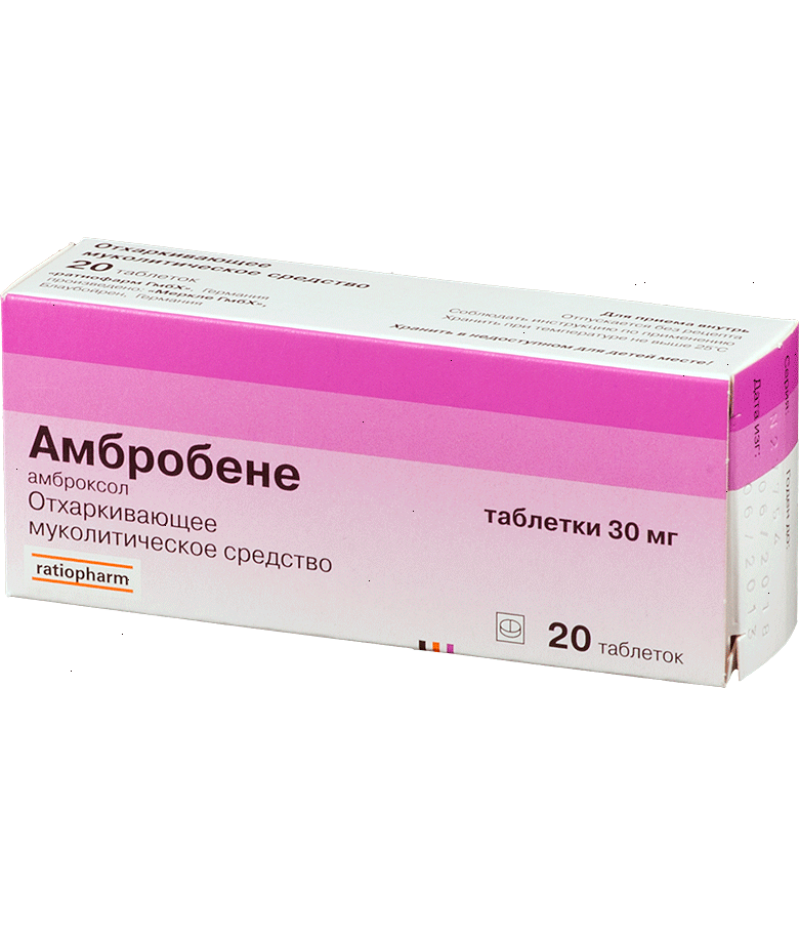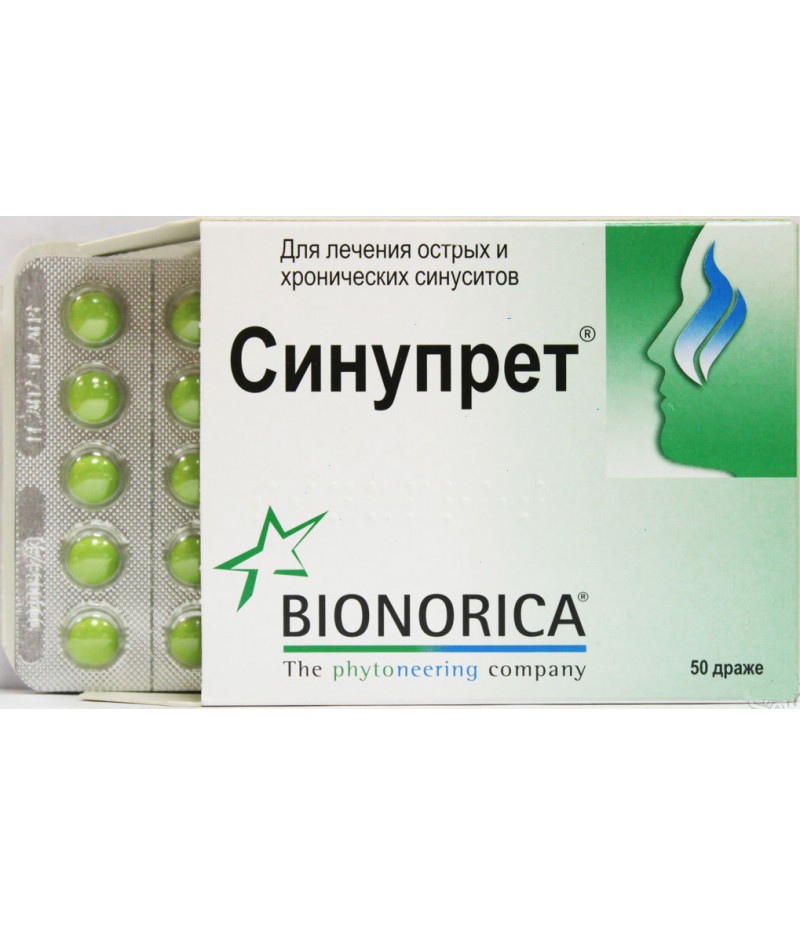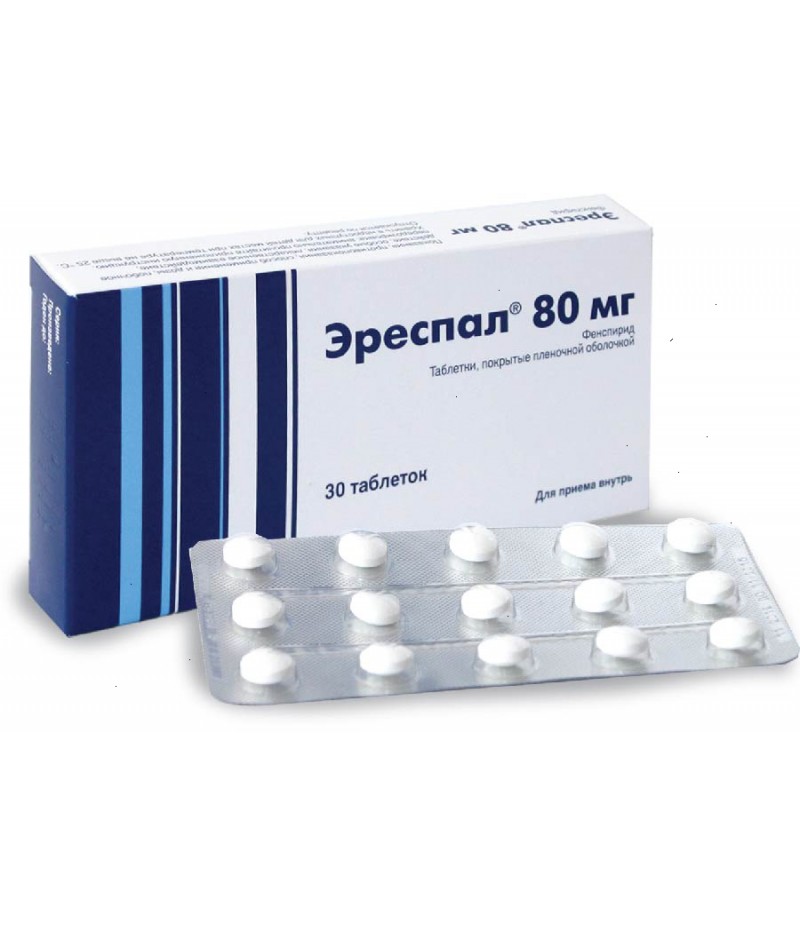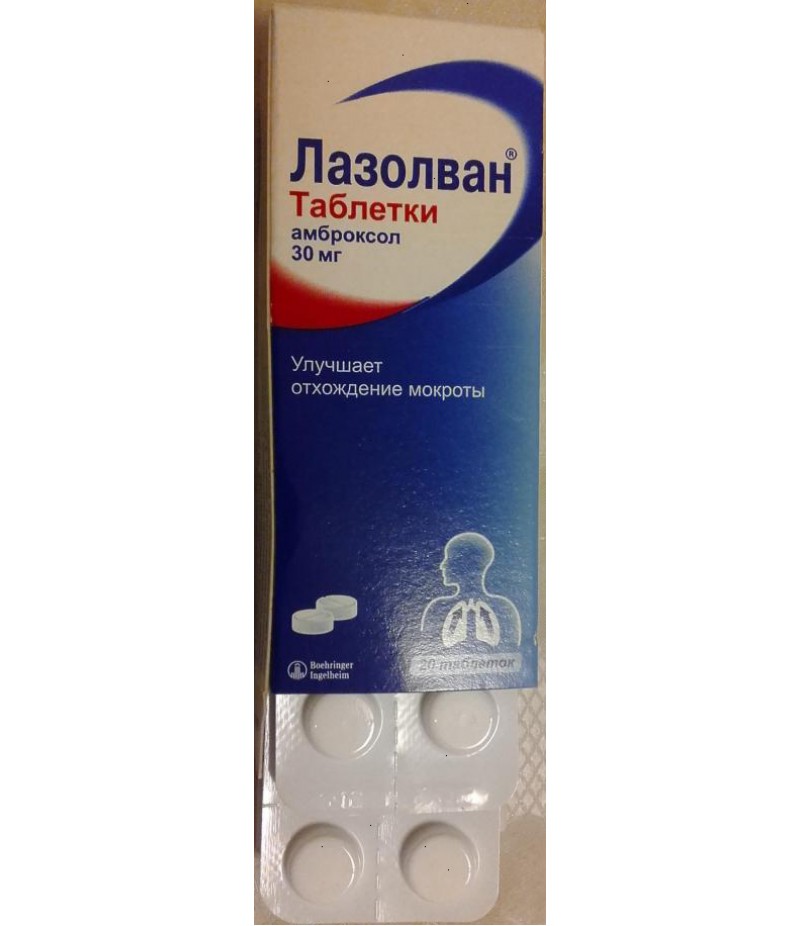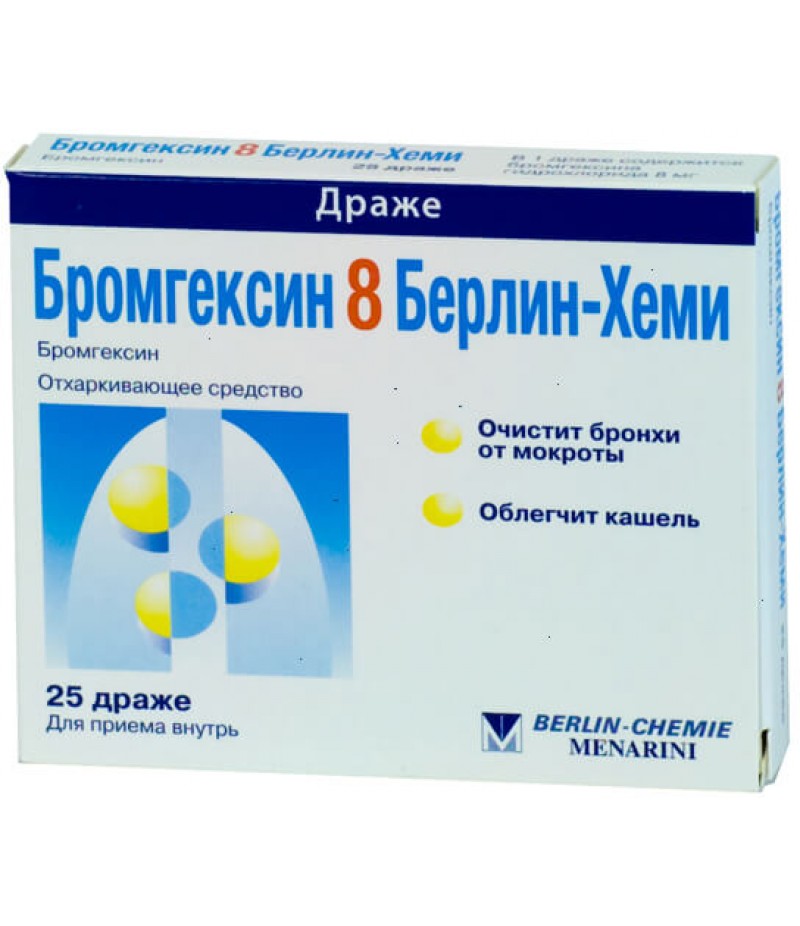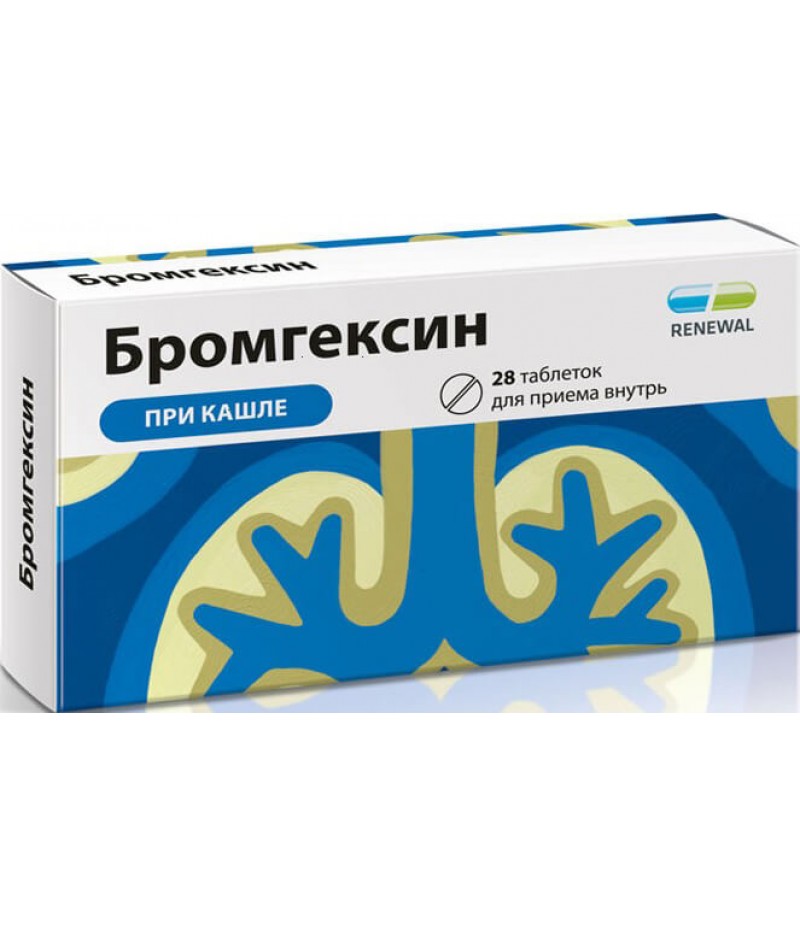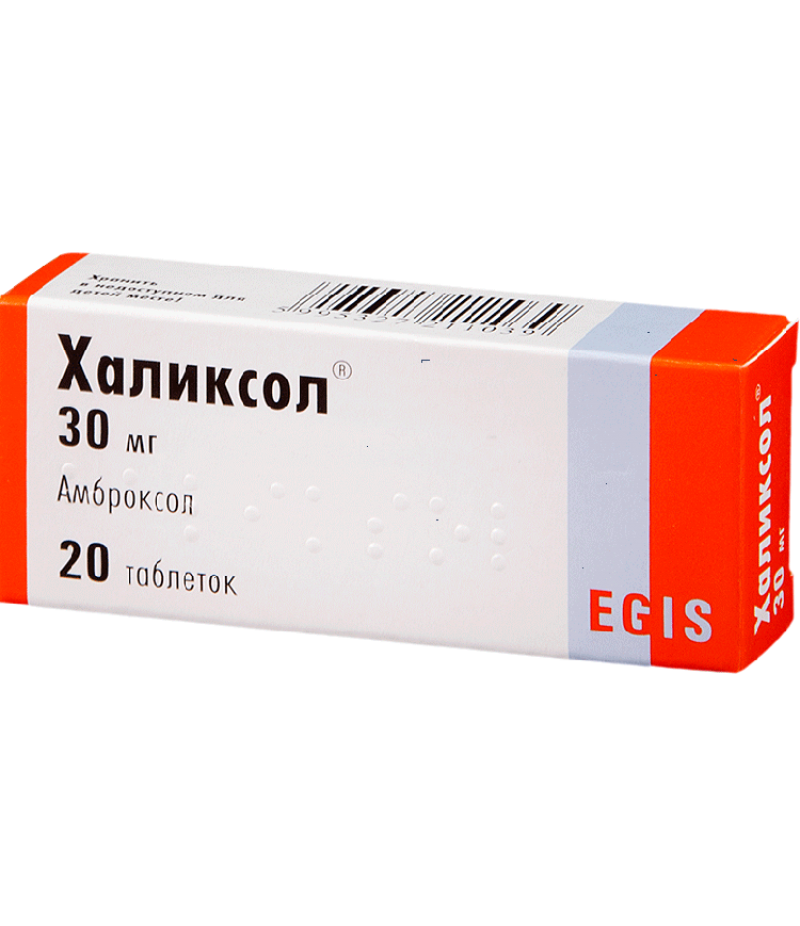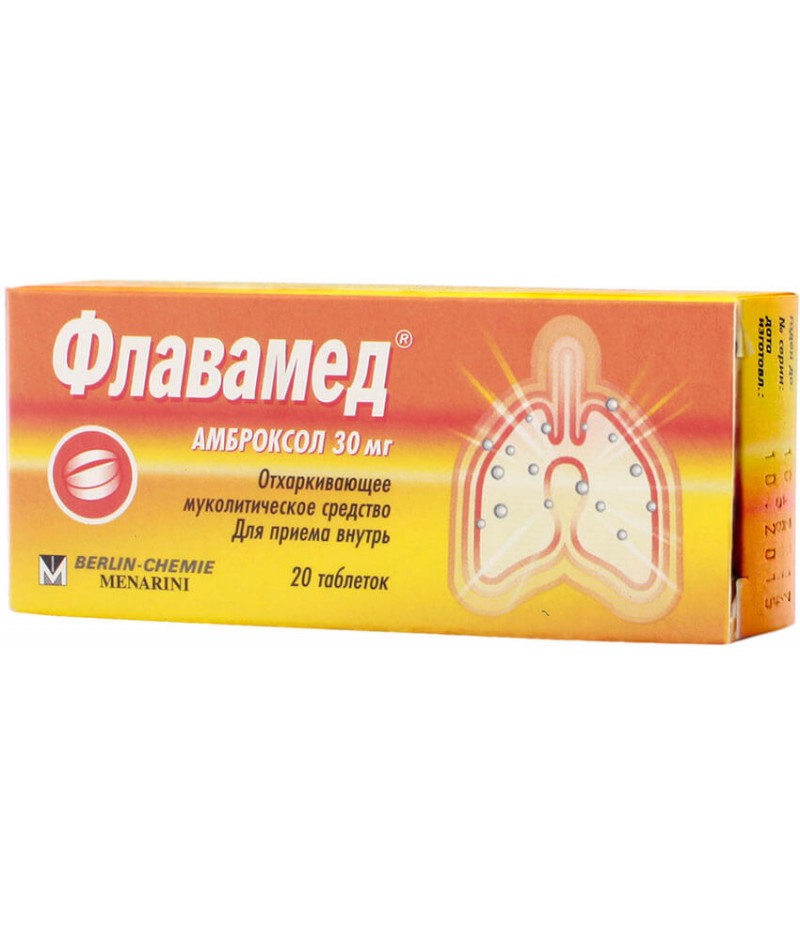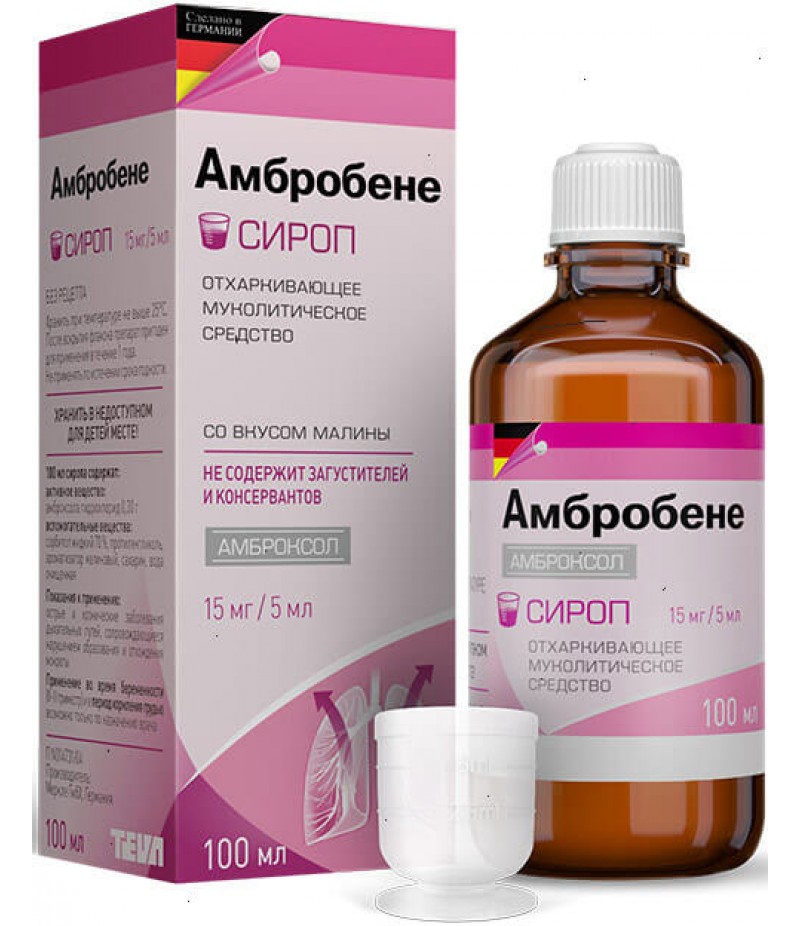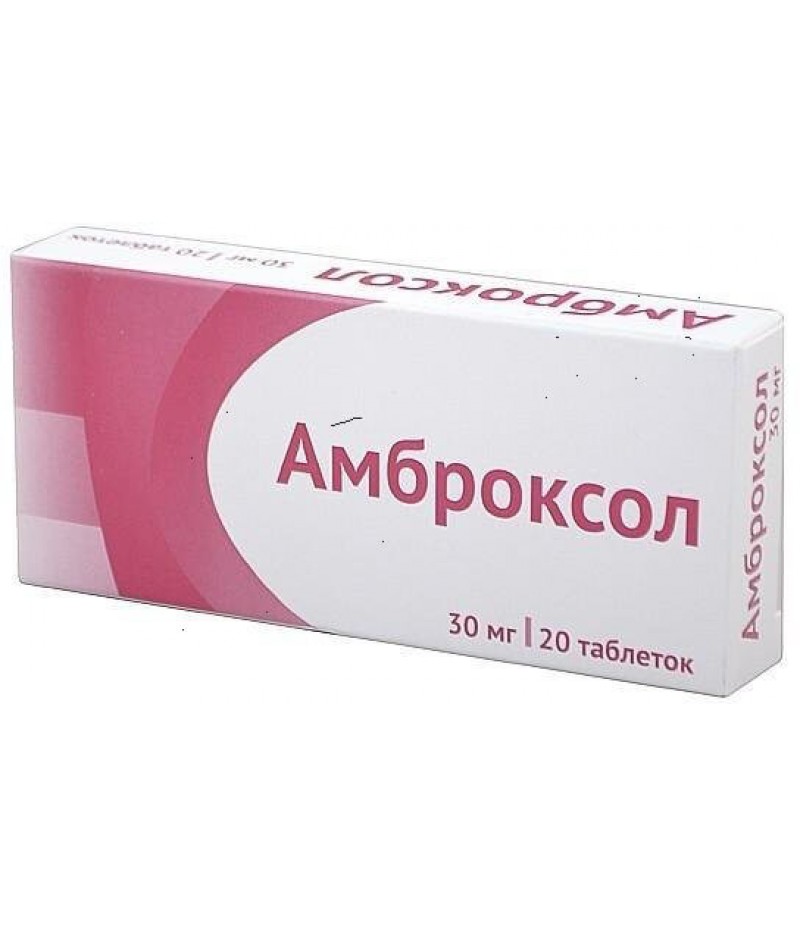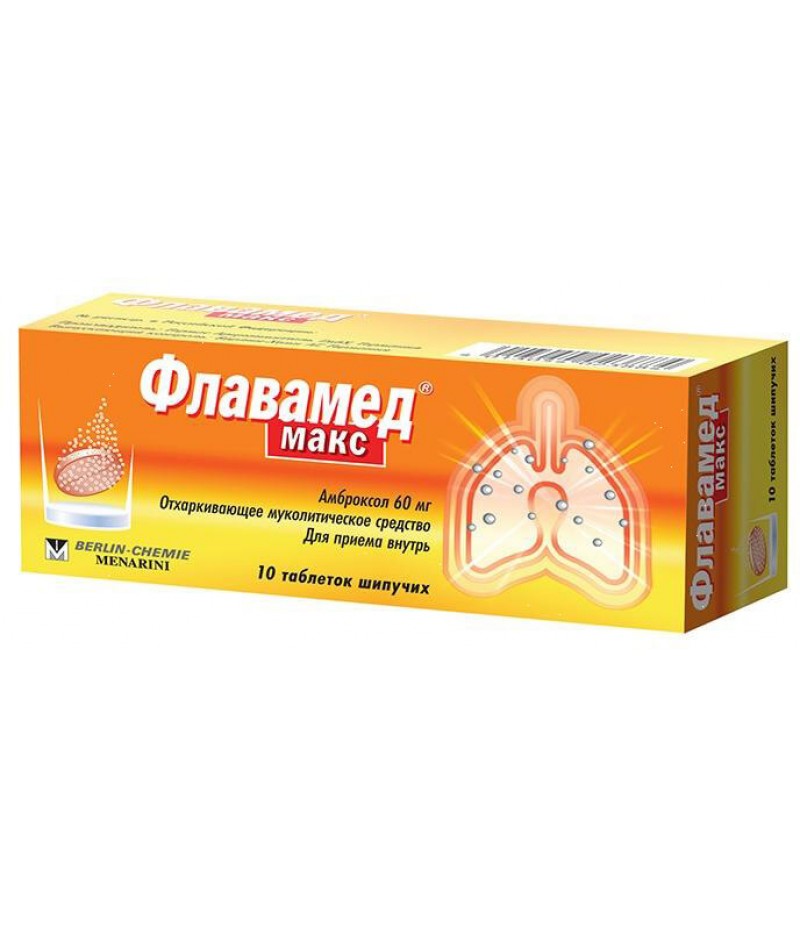Ambrobene 30mg #20
- $7.42
- 3 or more $6.85
- Availability:In Stock
Ambrobene user manualYou can buy Ambrobene hereCompositionAmbrobene contains 30 mg of ambroxene, lactose in the form of monohydrate (Lactose monohydrate), corn starch (Maidis amylum), magnesium stearate, silicon dioxide (silicium ..
Ambrobene user manual
You can buy Ambrobene here
Composition
Ambrobene contains 30 mg of ambroxene, lactose in the form of monohydrate (Lactose monohydrate), corn starch (Maidis amylum), magnesium stearate, silicon dioxide (silicium dioxide), anhydrous colloid.
One prolonged-action capsule contains 75 mg of ambroxol, microcrystalline cellulose (Cellulose microcrystalline), Avicel PH 102 and PC 581, triethyl citrate, methacrylic acid ethyl acrylate copolymer msds, hypromellose (Pharmacoat 603; Hypromellose), silicon dioxide (Silicium dioxide) anhydrous colloidal. The coating capsule shell includes: gelatin (Gelatin), titanium dioxide (Titanium dioxide), dyes (iron oxide red, yellow and black).
100 grams of syrup contains 0.3 grams of ambroxol, sorbitol (liquid) 70%, propylene glycol (Propylene glycol), saccharin (Saccharin), water, a raspberry flavor.
In 100 ml of the solution for oral administration and inhalation are 0.75 grams of ambroxol, potassium sorbate (Potassium sorbate); hydrochloric acid (Acidum hydrochloricum), water.
In 2 ml of the solution for intravenous administration, 15 mg of ambroxol, citric acid monohydrate (Acid citric monohydrate), sodium chloride (Sodium chloride), sodium hydrogenphosphate heptahydrate (Sodium hydrophosphate heptahydrate), water are contained.
Form of issue
Ambrobene has 5 forms of release:
pills;
injection solution for intravenous administration;
capsules retard;
syrup;
solution for inhalation and p / os administration.
The tablets are biconvex, round in shape. Their color is white, on one side there is a risk. In one package of the preparation there may be 2 or 5 blisters for 10 Ambrobene tablets.
pharmachologic effect
Expectorant, mucolytic.
Pharmacodynamics and pharmacokinetics
Ambroxol is a substance that is a metabolite of Bromhexine. Its action is aimed at stimulating the prenatal (fetal) development of the lungs: on the background of the use of the drug, the synthesis and secretion of the pulmonary surfactant is increased, and its disintegration is blocked.
Ambrobene has secretory, expectorant and secretolitic effects, activates the function of serous gland cells, which are localized in the mucous membrane of the bronchi, increases the amount of mucous secretion and stimulates the release of surfactant in the alveoli and bronchi, helps restore the disturbed balance of the mucosa and serous sputum components.
Ambroxol increases the activity of hydrolysing enzymes, stimulates the release of lysosomes from the Clara cells located in the bronchioles of the lungs and the function of the cilia of the ciliated epithelium, due to which the sputum is liquefied and the mucociliary transport of the pathological secretions improves.
During preclinical studies it was found that ambroxol has an antioxidant effect. With simultaneous use with antibiotics, Doxycycline, Amoxicillin, Erythromycin and Cefuroxime increases the concentration of the latter in secreted bronchial secretions and sputum.
The effect after application of the drug develops approximately half an hour after ingestion of p / os (inside) and approximately 10 minutes-half an hour after rectal administration. The duration of the therapeutic effect is dose-dependent and varies between 6 and 12 hours.
When taking p / os, ambroxol is almost completely absorbed from the digestive tract. Cmax is achieved after 1-3 hours. Due to presystemic metabolism, the absolute bioavailability of ambroxol after taking p / os decreases by about a third.
The resulting metabolites (glucuronides and dibromoanthranilic acid) are excreted by the kidneys.
With blood plasma proteins, the substance binds to approximately 80-90%.
Ambroxol penetrates the placental barrier and into the cerebrospinal (spinal) fluid, and also is excreted with the milk of a nursing woman.
The half-life of plasma is 7-12 hours. In general, the half-life of the substance and its metabolites is about 22 hours. Mainly the drug is excreted by the kidneys as metabolic products of ambroxol (about 90%), and only less than 10% of the substance is excreted in its pure form.
Indications for use
Indications for the use of Ambrobene are acute and chronic forms of respiratory tract diseases, in which the patient has difficulty getting away from sputum.
Contraindications
Usage Ambrobene is contraindicated in case of hypersensitivity to the components of the drug, as well as in the first trimester of pregnancy.
Additional contraindications for tablets:
hypolactasia;
lactase insufficiency;
malabsorption of glucose-galactose;
age up to 6 years.
With extreme caution, Ambroben should be taken in patients who have impaired renal function or are diagnosed with a serious liver disease. In this case, the dose of medication for them should be less, and the intervals between receptions - larger.
Side effects
Side effects associated with taking tablets, syrup and prolonged action capsules:
allergic reactions (including rashes on the skin, itching, shortness of breath, hives, angioedema, edema of the face);
headache;
increased weakness;
fever;
anaphylactic reactions (in extremely rare cases);
stomach ache;
nausea;
constipation / diarrhea;
vomiting;
increased dryness of mucous respiratory tract and oral cavity;
rhinorrhea;
exanthema;
dysuria.
Instructions for use Ambrobene
The duration of therapy in any dosage form is determined on an individual basis and is determined by the characteristics of the disease. The maximum duration of treatment Ambrobene without prescribing a doctor is five days.
The mucolytic effect of the drug manifests itself on the condition that the patient consumes a large amount of liquid. Therefore, during the treatment with the drug, the patient should drink as much as possible.
All dosage forms intended for taking p / os should be taken after meals, with the drops premixed with water, tea or fruit juice. Tablets and capsules are shown to be washed with a lot of water, chewing their instructions forbids.
Tablets Ambrobene: instructions for use
The optimal dose for children 6-12 years is half a tablet 2 or 3 times a day.
Patients older than 12 years in the first 2-3 days of the drug should take 1 tablet three times a day. If the expected effect is not observed, adult patients are allowed to increase a single dose to 2 tablets, the frequency of application of the drug is 2 times a day.
With 3 or 4 days of treatment, it is advisable to take 1 tablet 30 mg twice a day.
Overdose
Signs of intoxication with an overdose of ambroxol have not been established. There is evidence that exceeding the recommended dose provokes diarrhea and nervous excitement.
Ambroxol is well tolerated when taken orally at a dose of 25 mg per kilogram of body weight per day.
Severe overdose can cause increased salivation, nausea, vomiting, lower blood pressure.
In case of a serious overdose intensive therapy is indicated: stimulation of vomiting and gastric lavage. To carry out these measures should be in the first hour or two after taking the drug. Further treatment is symptomatic.
Interaction
The simultaneous use of antitussive drugs and ambroxol suppresses the cough reflex, which in turn can provoke stasis.
Ambroxol with simultaneous use with Erythromycin, Amoxicillin, Doxycycline and Cefuroxime increases the concentration of these antibacterial drugs in sputum and bronchial secretions.
When you administer ambroxol to a vein, you should use solutions that have a pH of less than 6.3 as solvents. For ambroxol, this value is equal to 5, so too large a difference in pH values can cause precipitation of the base of the substance.
Terms of sale
Ambrobene in oral dosage forms belongs to the category of OTC drugs.
Storage conditions
Store in rooms where the temperature does not exceed 25 ° C. Keep away from children.
Shelf life - 5 years.
special instructions
In exceptional cases, severe dermatological reactions, including Lyell and Stevens-Johnson syndromes, may occur with the drug. When there are changes on the skin or mucous membranes, you should urgently consult a doctor and stop the treatment with Ambrobene.
The calorie content of the syrup is 2.6 kcal / gram of sorbitol. In one 5-ml measuring cup, 2.1 grams of sorbitol is contained, which is equivalent to 0.18 XE (bread units).
Sorbitol has the ability to exert a mild laxative effect.
From what cough is Ambrobene appointed?
Ambrobe is a mucolytic and, like all preparations of mucolytic action, it is advisable to prescribe it with a dry cough caused by diseases of the lower parts of the respiratory tract.
The medicine optimizes the work of epithelial cells and liquefies the pathological secret, thereby facilitating its expectoration.
In case the patient has a cough wet, abundant and productive, there is no need to prescribe medications for liquefying sputum.
Analogues
Structural analogues Ambrobene: Lasolvan.
Analogs for the mechanism of action are: Sinupret.
Ambrobene for children
What are the tablets and syrup prescribed for children? The use of the drug is indicated for the treatment of respiratory tract diseases that occur in acute or chronic form.
Tablets to a child can be prescribed only after reaching the age of six, capsules - no earlier than 12 years. The optimal dosage form for children is syrup Ambrobene. However, it should be remembered that children who are not yet 2 years old, syrup, IV solution and solution for taking p / os and inhalations are prescribed exclusively according to the doctor's indications.
The most important property of Ambrobene is the ability to stimulate the formation of surfactant - a substance that is necessary to ensure normal functioning of the lungs. And it is this property that makes the drug valuable for babies, who after birth had problems with the lungs.
Newborn babies and for children up to a year Ambrobe is prescribed in order to normalize the production of surfactant and prevent adhesion of the alveoli of the lungs, and also in order to prevent bronchitis, which is often complicated by acute respiratory viral infection, to become chronic.
The dosage regimen and the optimal duration of treatment are determined by the attending physician, taking into account the nature of the course of the disease and the age of the small patient.
In the video advertising brand Ambrobene the emphasis is on the fact that the drug is produced in Germany, which in itself is the guarantor of its high quality and efficiency.
The main message of advertising is that the standards, according to which Ambrobene is created, are not inferior to high quality standards and the user characteristics, thanks to which the German machines, toys and household appliances have long and firmly earned the recognition of consumers in different countries of the world.
And the confirmation of the manufacturer's statements about the effectiveness of his product are numerous positive responses about Ambrobene for children: according to most mothers, the remedy is one of the best for today, as it really works well and helps the child cope with a strong cough.
Ambrobene during pregnancy
To date, there is no reliable data on the safety of Ambrobene during pregnancy (in particular, in the first 28 weeks). In the course of animal studies, there was no teratogenic effect of ambroxol.
The use of the drug in the 2nd and 3rd trimesters is possible only on the prescription of the doctor and only after an assessment of the potential benefit to the mother and the possible risks to the fetus will be made.
Studies conducted on animals have established that ambroxol has the ability to enter breast milk. However, the use of the drug in breastfeeding women has not been studied enough, and therefore Ambrobene can be appointed only after assessing the benefit / risk ratio for mother and child.
Reviews about Ambrobene
Reviews of syrup Ambrobene, as well as reviews on tablets, a solution for inhalation or a solution for intravenous administration are predominantly positive. They are confirmed by sufficiently high estimates of the drug at specialized forums, where people share the experience of using one or another medicine: on a five-point scale, Ambrobene is rated at 4.5-4.8 points.
The main advantages of the drug are:
efficiency;
speed;
ease of use;
a pleasant taste for the child;
possibility to apply from the first months of the child's life;
a large number of dosage forms (tablets, solution for intravenous administration, retard capsules, solution for inhalation and administration p / os, syrup), which allows you to choose the best for yourself.
Nevertheless, there are also neutral and negative reviews, which are related to the fact that the use of the drug did not give as pronounced a result as expected.

